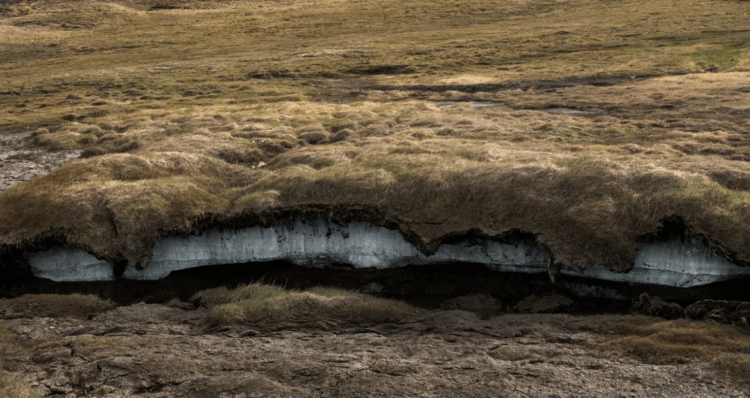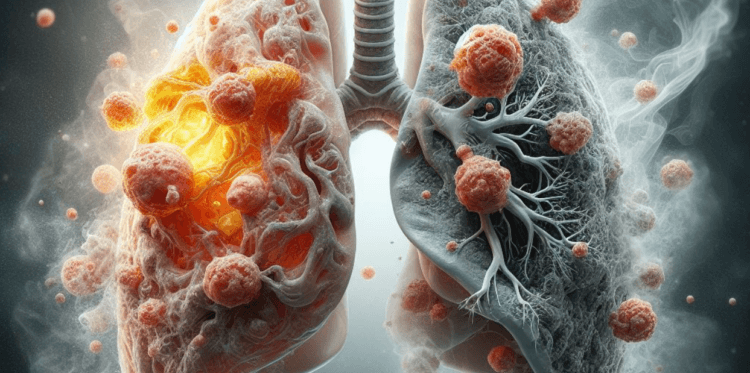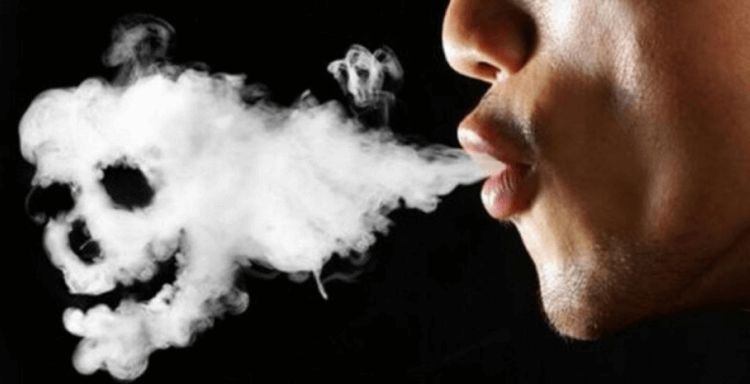Global warming is leading to active melting of not only glaciers, but also permafrost in the Arctic. This process can lead to a number of negative consequences, including the release of large amounts of greenhouse gases, which will further accelerate the warming process. In addition, melting threatens the destruction of infrastructure and even, possibly, the emergence of new deadly diseases. According to a new study, there is another danger that has not been mentioned before – an increase in the concentration of radioactive gas that causes cancer. According to scientists, this is a serious threat to the health of local residents.

The melting of permafrost in the Arctic could cause serious harm to the health of the local population
< h2>Radioactive gas from permafrost
Permafrost is a kind of barrier that blocks the release of gases contained in the soil to the surface. We are talking primarily about methane and carbon dioxide, which are greenhouse gases. However, in addition to them, a more dangerous gas is present in the soil – radon. Experts report that as permafrost melts, it comes to the surface and can accumulate indoors.
To assess how serious a threat this gas poses in the Arctic, scientists modeled radon emissions and how it penetrates buildings (both with and without basements). At the same time, they assessed various factors, such as permafrost depth, melting rate, etc.

Permafrost serves as a barrier to gases that accumulate in the soil
Modeling confirmed that permafrost, on the one hand, is a barrier to radon, but on the other hand — leads to its accumulation and increased concentration. Accordingly, when the barrier disappears, a large amount of radioactive gas escapes to the surface. It is especially dangerous for buildings with basements, where it can accumulate in large quantities.
As reported in a study published in the journal Earth's Future, thawing permafrost can lead to an increase in the concentration of this gas to 200 becquerels per cubic meter or higher. This value in many countries is considered a threshold value at which certain measures are required, such as increased ventilation, sealing cracks, etc. However, this threshold is arbitrary, since there are no safe levels of radon.

Radon is one of the most common causes of lung cancer
How much Radon is dangerous for humans
Radon is a naturally occurring gas that is tasteless, colorless and odorless, so its presence indoors cannot be detected without special equipment. According to the World Health Organization, radon is one of the leading causes of lung cancer in humans, accounting for 3 to 14% of cases. Only smoking causes more cases of lung cancer.
But the worst part is that smoking increases the incidence of lung cancer caused by radon by 26 times, as scientists report in their statement. Unfortunately, smoking is 4.4 times more common in Arctic communities than in other regions.
The first increased incidence of lung cancer was found in miners in uranium mines who were exposed to radon. Subsequently, studies conducted in different countries have confirmed that even low concentrations of radon, which sometimes occur even in residential areas, cause various health problems and significantly increase the risk of developing lung cancer.

Smoking increases the risk of developing cancer from radon by 26 times
An increase in radon concentration over a long period of time by 100 Bq/m3 increases the risk of developing lung cancer by 16%. As the concentration increases, the risk of developing lung cancer increases linearly. Therefore, an unexpected release of radon can pose a serious threat to health.
Follow the link to our ZEN CHANNEL. We have prepared a lot of interesting, exciting materials dedicated to science for you.
As mentioned above, large emissions of radon — isn't the only health risk associated with thawing permafrost. Scientists also fear that viruses and bacteria dormant in the permafrost may awaken and provoke outbreaks of new unknown diseases. That is, it is quite possible that the thawing of permafrost will provoke the emergence of the deadly hypothetical pathogen Factor X, which we talked about earlier.